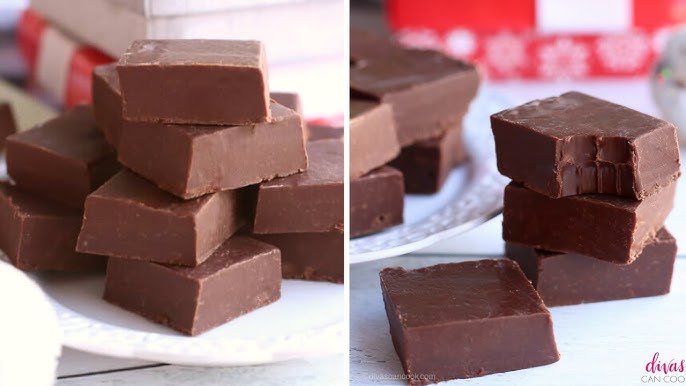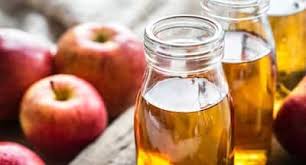Fudge Recipe: Fudge is one of those delightful, melt-in-your-mouth treats that’s impossible to resist. Whether you’re making it for a special occasion or simply to satisfy a craving, fudge brings a sense of nostalgia and joy. It’s smooth, sweet, and surprisingly easy to make at home with just a few ingredients. The best part? There are endless flavor combinations to explore! This guide will walk you through the entire process—from preparing your ingredients to cutting perfect squares of creamy fudge.
So, are you ready to dive into the world of homemade fudge? Let’s get started!
Ingredients Needed for Fudge
To make classic chocolate fudge, you’ll need a handful of basic ingredients:
- 2 cups granulated sugar
- 1 cup milk or heavy cream
- ½ cup butter
- 1 tsp vanilla extract
- Pinch of salt
- 2 cups chocolate chips
Optional add-ins for variety:
- Chopped nuts (like walnuts or almonds)
- Marshmallows
- Caramel swirls
Tools and Equipment
You don’t need fancy tools, but having the right ones will make your fudge-making experience smoother.
- Saucepan (heavy-bottomed to avoid burning)
- Wooden spoon (for stirring)
- Candy thermometer (optional but highly recommended)
- 8×8-inch baking pan (lined with parchment paper)
- Spatula
Step-by-Step Process to Make Fudge
Step 1: Preparing Your Workspace
Before starting, gather all your ingredients and tools. Cooking fudge can move quickly, so it’s best to have everything within reach.
Step 2: Lining the Pan Properly
Line your 8×8-inch pan with parchment paper or aluminum foil, leaving some overhang for easy removal later.
Step 3: Combining the Ingredients
In a saucepan, combine sugar, butter, milk, and a pinch of salt. Stir continuously to prevent the mixture from sticking.
Step 4: Heating the Mixture to Perfection
Turn on medium heat and bring the mixture to a gentle boil. Use a candy thermometer if available, and aim for 234°F (112°C)—this is called the “soft-ball stage.”
Step 5: Stirring and Achieving the Right Consistency
Remove the saucepan from heat and add your chocolate chips and vanilla extract. Stir quickly until the mixture is smooth and glossy.
Step 6: Pouring the Mixture into the Pan
Pour the mixture into the prepared pan and spread it evenly with a spatula. If you’re adding nuts or marshmallows, now is the time to sprinkle them on top.
Step 7: Cooling and Setting the Fudge
Let the fudge cool at room temperature for about 3-4 hours or refrigerate it for quicker results.
How to Know When Fudge is Ready
You’ll know your fudge is ready when it’s firm to the touch but still soft enough to cut. If you used a thermometer, hitting that 234°F mark ensures your fudge will set correctly.
Cutting and Storing Your Fudge
Use a sharp knife to cut your fudge into squares. For clean edges, run the knife under hot water and wipe it dry between cuts.
- Storing tip: Keep your fudge in an airtight container at room temperature for up to 2 weeks. For longer storage, refrigerate or freeze.
Variations of Fudge Recipes
- Chocolate-Peanut Butter Fudge: Replace half the chocolate chips with peanut butter.
- Vegan Fudge: Use coconut milk and dairy-free chocolate.
- White Chocolate Cranberry Fudge: Swap in white chocolate and add dried cranberries.
Common Mistakes to Avoid When Making Fudge
- Overheating the mixture can result in hard, crumbly fudge.
- Skipping the stirring leads to uneven textures.
- Not cooling the fudge long enough makes it difficult to cut cleanly.
How to Fix Fudge That Won’t Set
If your fudge is too soft, try refrigerating it longer. If it still doesn’t set, reheat the mixture with a little more milk and bring it back to the soft-ball stage.
Serving Suggestions for Homemade Fudge
Fudge pairs wonderfully with coffee or hot chocolate. You can also serve it as part of a dessert platter with cookies and fruit.
Healthier Alternatives and Sugar-Free Options
For a lighter version, use reduced-fat butter and unsweetened cocoa powder. Swap sugar with stevia or monk fruit sweetener to make it diabetic-friendly.
Perfect Occasions to Make and Gift Fudge
Fudge makes an excellent gift during the holidays—just wrap it in wax paper and place it in a decorative tin. It’s also a great treat for birthdays or family gatherings.
Pro Tips for Mastering the Art of Fudge Making
- Always stir constantly to avoid burning.
- Use a candy thermometer to ensure you hit the right temperature.
FAQs about Fudge Recipe
1. What are the basic ingredients for making fudge?
The most common ingredients include sugar, butter, milk, and chocolate. Some recipes also use condensed milk or marshmallows for a smoother texture.
2. How do I prevent my fudge from being too grainy?
Ensure the sugar dissolves completely by cooking it slowly and stirring continuously. Avoid stirring once the mixture begins to boil, as this can cause crystallization.
3. How long does fudge take to set?
Fudge usually takes about 2-4 hours to set at room temperature. If you want it to set faster, you can refrigerate it for 1-2 hours.
4. Can I freeze fudge for long-term storage?
Yes, you can freeze fudge for up to 3 months. Wrap it tightly in plastic wrap and store it in an airtight container to prevent moisture from affecting the texture.
5. Why is my fudge not firming up?
If your fudge isn’t setting, it may not have reached the right temperature during cooking. Use a candy thermometer to ensure it reaches the soft-ball stage, around 234°F (112°C).
6. Can I add flavors or toppings to my fudge?
Absolutely! You can add nuts, vanilla extract, sea salt, or even peppermint for extra flavor. Drizzling caramel or chocolate on top also enhances its appeal.
7. How do I store homemade fudge?
Store fudge in an airtight container at room temperature for up to two weeks. You can also refrigerate it to keep it fresh longer.
Conclusion
Making fudge at home is both simple and rewarding. With just a few basic ingredients and a little patience, you’ll have a delicious treat that’s perfect for sharing—or keeping all to yourself! So, don’t be afraid to experiment with flavors and techniques. Happy fudge-making!
References
For a well-rounded understanding and validation of the information provided in the Fudge Recipe, we recommend consulting the following reputable sources:
- Allrecipes – A trusted platform offering diverse recipes, cooking tips, and insights on preparing fudge for beginners and professionals.
- Food Network – Explore expert-backed recipes, videos, and tips on perfecting fudge with various flavors and techniques.
- Delish – Known for easy-to-follow recipes, including creative fudge variations, perfect for quick reference.
- Serious Eats – A reliable source for in-depth culinary science, offering insights into ingredients and techniques used in fudge-making.
These references ensure the accuracy and comprehensiveness of the information provided, while also serving as excellent resources for readers eager to explore further.



